The first extended body nymph I ever saw was a display fly tied by Oliver Edwards the first time I met him. It was 1991/2, I can't recall the exact date. He had used a loop of mono to attach two hooks and cut the bend off the second hook. He had tied rubber band sections either side of the joint. As it was a large "super imitative" stone fly nymph, tied for display, I have no idea of how it would fish. I have never pursued this kind of articulation as to me it isn't very imitative. It is a hinge type joint, whereas I would describe the action of a nymph as a wave travelling along its body.
Later I came across furled bodies as part of a dubbing technique in articles by Davie Wotton. He mentioned that tales could be incorporated in the articles, but didn't include any instructions. When I met up with him next I asked him to demonstrate this, to which he said I should 'work it out myself'. At that point I tried with methods similar to the how John Scott makes his. However, as my fly tying was then moving in a commercial direction, I didn't pursue this for long. I have though a different method for making a FEB that I will offer later.
It hasn't been something I have really pursued in the way John has. I have found that colour is more important in nymphs than it is in dry flies. One river I fished the nymphs tended to have brighter dorsal sides than I was used to seeing. Imitating this lead to an improvement in catch rates. That's when I developed my ByColour Nymph, as an easier way to imitate the dorsal and ventral colours. I have seen another method for tying a similar nymph but I find it a rather more difficult fly to tie. It would be possible to incorporate the method into a FEB, though at this point it is just an idea, and may be difficult to achieve. I'll have a play at the vice when I get going later. (Its 5 am here).
A more important factor than colour to me is depth. It is sometimes much more difficult to get a fish to rise up for a nymph than it is to get a fish to move sideways to a nymph. Getting a small nymph deep has been one of the things I have pursued.
Marabou can be used to make a FEB. In doing so it will loose a lot of its movement. What it does give you is a good imitation of gills along the body. The method I would use for making this is. I must apologise. This is not easy do and photograph working alone. In the photos I didn't get enough twist into the materials. The last photo was one I did separately. It isn't easy to hold two tools and the camera at the same time!
Take a bunch of marabou and tie it onto a mount. (Either a hook shank or needle mounted in your vice). Include with it the materials for your tail. The tail material should be half the length of the body + the tail length you want.
With your probe clip or long nose hackle pliers grip the marabou and thread.
Spin the bobbin holder and hackle pliers.
Once spun up tease out the tails from the half way point with your bodkin.
Place the bodkin at the half way point and lift your bobbin holder back to the mount folding the twisted material around your bodkin.
Slide your bodkin out of the fold and encourage the materials to furl.
Grip the FEB close to where it is tied to the mount with hackle pliers, and trip off the mount.
Note, The colours I have used are for clarity, I'm demonstrating a technique not tying a fishing fly! Colour doesn't matter to technique use whatever colour you like.
You may find that method easier than using two probe clips. I would not say it is better than the method John uses. Its just the way I did them years ago when I first came across them. Personally I think I prefare John's method. A different way though may help you.
Sorry again about the photos, they are not the best. Hope they get it across.
Cheers,
A.


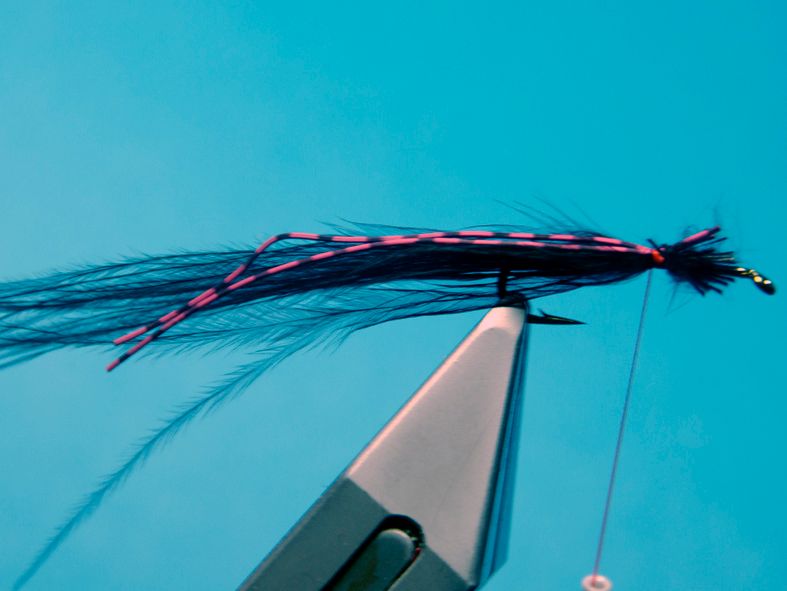
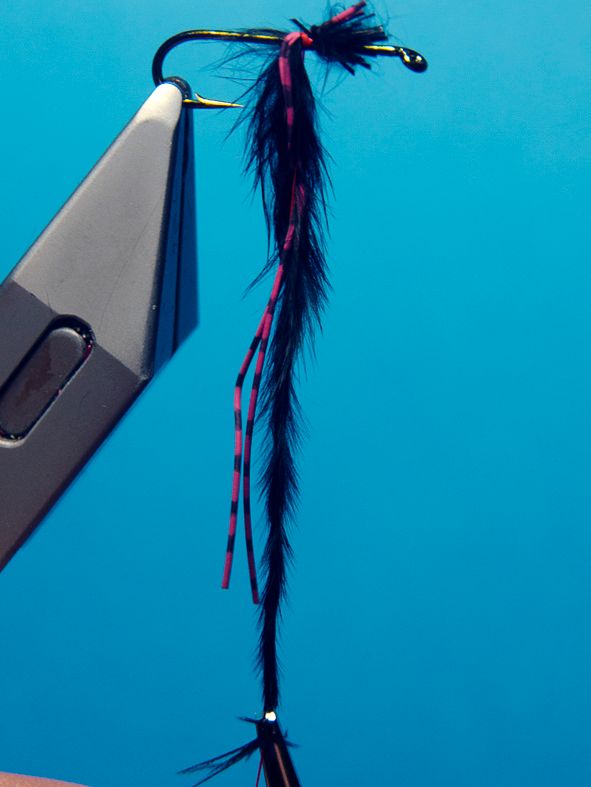

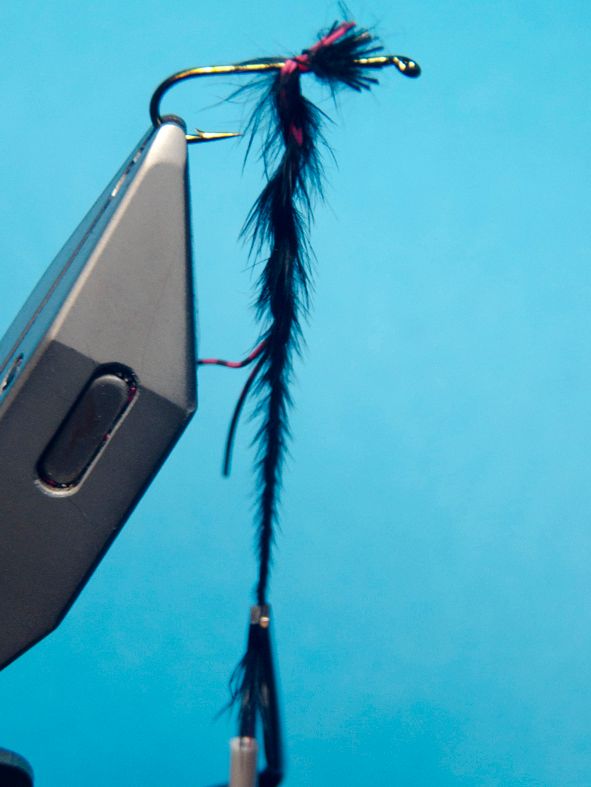
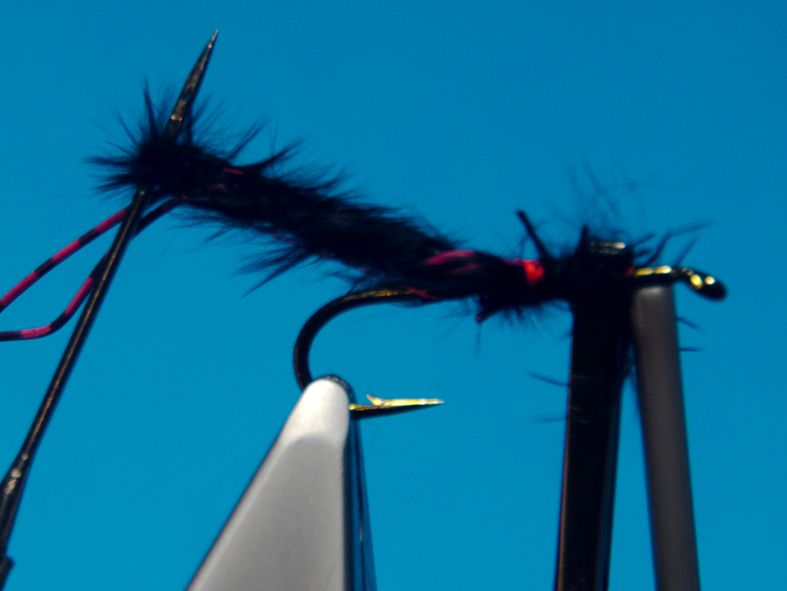
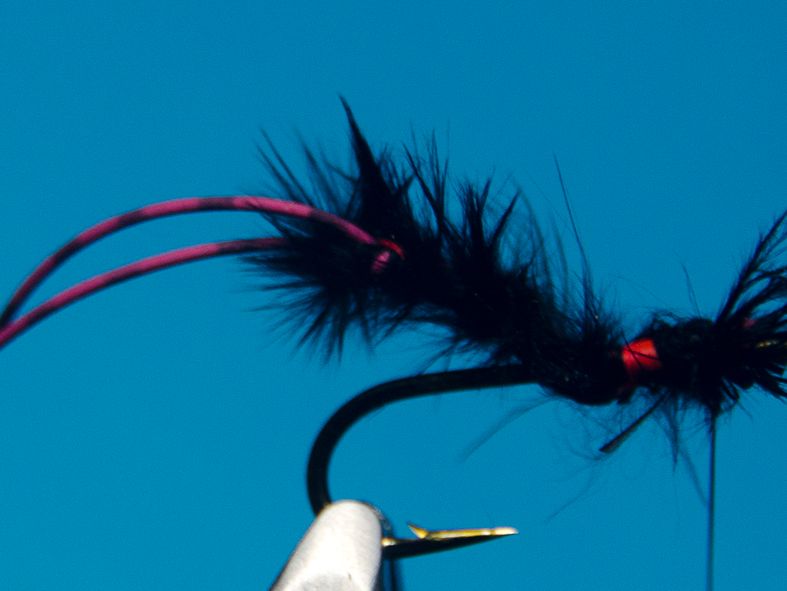
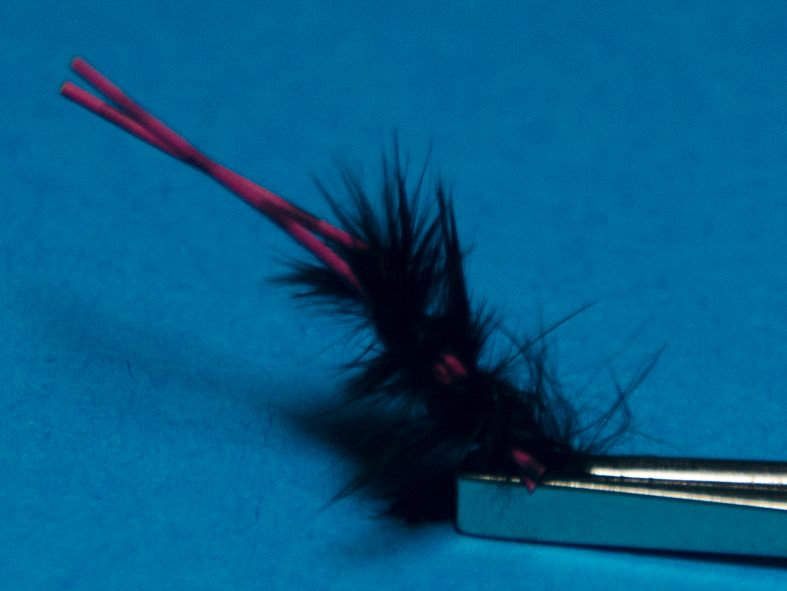

 Reply With Quote
Reply With Quote